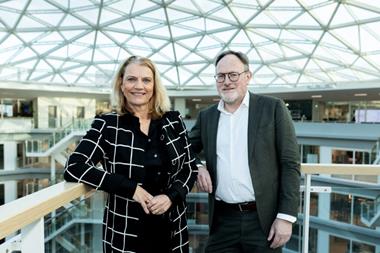Like many aspects of modern life, pensions are becoming less standardised and more complex, with individuals facing more choice and demanding more information tailored to their needs. As pension funds try to meet the requirements of their members, communication is becoming an increasingly important part of the service they provide.
Pension funds in The Netherlands are attempting to not only improve their traditional documents and other information they send to members, but are also taking a lead in using the internet and customer relationship management technology to improve communication with members and make accessible as much information as possible.
“We are more or less constantly improving our communication with our members in two ways - technologically, via our call centre, website, etc, and in the clear and simple style of our answers, in direct contact as well as in writing,” says Martin van den Akker, corporate communications manager at Dutch healthcare and social workers pension fund PGGM.
“We feel that is of paramount importance to translate our messages into a form that is understood easily by virtually all of our customers. These days, we demonstrate that by sending our members a Pensioenbericht (pension overview) that is short, simple, clear and self-explanatory, and we are getting some very good reactions from_members.”
Many Dutch pension funds share these ambitions of greater clarity and simplicity in the language used in their dealings with members, and exploiting modern technologies to offer more channels of communication, as well as targeting information more effectively.
“We define more and more target groups in our communication with the members of our pension funds,” says Anja Brands, communications adviser at Blue Sky Group, which handles the pension funds for Dutch airline KLM. “We try to inform the members in their own language in a style that fits best to the target group, and, where possible, with information about their personal situation.”
“Our pension fund puts a lot of time and effort into communicating with members and pensioners,” says Simon Commandeur, secretary of Hoogovens corporate pension fund. “Our ambition is to provide our members with information that is completely tailored to their individuals needs. An example is our annual pension statement where members only receive information that is relevant to their individual situation.”
Meanwhile, Interpolis, which manages the pension funds of a number of Dutch schemes, claims that it was a pioneer of the more intelligible style of pension statements. “We developed a pension statement that very clearly answers the questions of members,” says Elles van Brenk, director of communications at Interpolis.
In moving away from standardised pension statements, letters and other communications with their members and pensioners, pension funds are having to link the systems that produce their documentation with their database of members and extract and collate the data based on the profile of the individual.
“Database management is an important tool when ABP targets it audiences - for example, different kinds of letters are sent to different audiences,” says Thijs Steger, spokesman for the massive pension fund for Dutch government and educational workers ABP.
But the two technologies that are having the most impact on the way in which Dutch pension funds communicate with their members are the web and customer relationship management (CRM) software. Most pension funds have at least basic information on their web sites these days.
For KLM fund members, Blue Sky provides information on the ins and outs of their pension plan related to changes in their personal situations, frequently asked questions, news about changes in the pension legislation, etc. Similarly, ABP tries to tailor the information on its website to the important life events of members, like becoming disabled, divorce or emigration.
One of the advantages of using the web as a communication medium is that pension funds can monitor member’s usage. “One of the ways in which we continuously monitor customer satisfaction is through measuring the use of our website, and the extent to which it is used,” says Steger.
ABP tracks what information members look at, how they move around the web site, whether they follow through all information or tend to log off at some point, and so on. It also measures the usage of the tools that it makes available on the site. In addition, the pension fund has installed a new ‘intelligent’ search engine on the site that attempts to interpret exactly what information a member is after from loosely worded questions, and will offer alternative questions if the initial answer is not correct.
Like PGGM, Blue Sky and others, ABP offers its members online calculators for working out what they can expect to receive on retirement and how this will be affected by various events, such as increased payments, later retirement and so on.
KLM pilots can, on the web, recalculate their pensions under eight what-if scenarios, while PGGM members can use the pension fund’s online pension planner in combination with their annual pension statement to calculate a precise value of what they can expect on retirement, as well as ways in which the pension can be ‘repaired’ (by top-up or other means) if necessary.
Interpolis offers personal pension entitlement calculators with a variety of options on the websites of many of its client funds. Meanwhile Akzo Nobel corporate pension fund provides a financial planning tool on its website that enables members to do a number of calculations, such as finding out the impact of choosing non-standard pension dates or making additional pension payments, and alternative projections of asset performance.
In addition to this exploitation of the web, a growing number of pension funds are implementing CRM software in their call centres to make their response to members more efficient and individual. “In our advice division we make extensive use of CRM and other supporting programs to facilitate a close contact with our customers, both our insured and their employers,” says van den Akker.
Steger says that CRM software plays an important role in ABP’s call centre. “In our CRM system we keep track of all contacts, such as a phone call or the sending of a form, between ABP and the member,” he says. When a member calls, they do not have to begin with a long historical explanation of their situation because the ABP call centre worker who answers can see the history of the contact at a glance on the CRM system.
CRM systems are essentially sophisticated customer databases that allow all interactions with a customer, or pension fund member in this case, to be recorded in one place, plus links to where other information on the member can be found, such as their pension statement.
CRM systems can be programmed with scripts for call centre workers to use when talking to members, and with workflow processes so that the call centre worker follows through the necessary procedure when taking an action.
Furthermore, sophisticated CRM systems also offer the ability to track and analyse calls, creating statistics on types of calls, areas of enquiry and so on, allowing the pension fund to analyse these statistics to improve responsiveness. Many sales-oriented organisations use CRM systems to help with the cross-selling of products because they enable the organisation to identify types of customer who, having bought one product, are likely to buy another.
Where pension funds offer a range of optional services, they could use their CRM system to help identify members that might be interested in the additional or alternative services.
Although ABP, PGGM, Blue Sky and Interopolis all said they use CRM software, none would identify the supplier. Because CRM is a broad term, suppliers of all kinds of software - such as databases, administration, sales, telemarketing, etc. - tend to describe their software as CRM these days because it is a current business trend. However, there are also a number of products that were specifically designed to provide advanced customer relationship analysis and management functions, and most of the major business software suppliers, such as Oracle, Microsoft and SAP, have CRM applications in their product suites.
By adopting CRM technology pension funds are only providing the kind of response to their members that the members encounter in their dealings with other organisations, such as banks, utilities companies and retailers, which all now make heavy use of CRM software. By combining CRM and the web, Dutch pension funds are starting to provide modern, sophisticated communications with their members.












No comments yet